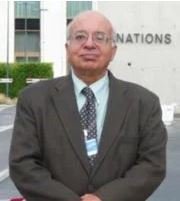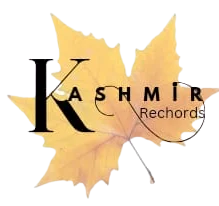Places the community at the centre of the challenge — makes it clear who the question is directed to.
(Kashmir Rechords Exclusive)
Dr. Vijay K. Sazawal, a Kashmiri-American nuclear scientist and noted commentator on Kashmir affairs, having affiliation with (www.KashmirForum.org),has issued a thought-provoking appeal to the Kashmiri Pandit community, asking them to critically examine how they commemorate their collective tragedies.

In an email, addressed to some Jammu-based community leaders, historians and researchers and also shared with Kashmir Rechords, Dr. Sazawal posed a fundamental question: “Where do we go from here?”
“Year after year, we mark our exodus with speeches and declarations, but no one outside our community takes notice,” Sazawal observed. Referring to this year’s September 14 remembrance, he pointed out that while victims of terrorism in other region (Baisaran) were acknowledged by the public and the government, the plight of Kashmiri Pandits went unmentioned.
This, he suggested, raises an uncomfortable dilemma: “Are we merely comforting ourselves, or are we leaving behind a meaningful legacy?”
A Larger Historical Framework
Dr. Sazawal urged the community to expand its historical lens. Instead of limiting remembrance to the events of 1989–90, he proposed situating the Kashmiri Pandit story within a centuries-long timeline of persecution, beginning in 1339.
“Rather than focusing solely on one exodus, our theme should be that our ethnic cleansing began in the 14th century and continues till today,” he wrote. Such a reframing, he emphasized, would demand rigorous historical research, creative storytelling, and modern communication strategies to engage wider audiences.
Towards a Durable Legacy
Dr. Sazawal warned that as time passes, memories of the 1989–90 exodus will inevitably fade. Without a sustainable model of remembrance, future generations may be left wondering why their elders repeated rituals year after year without meaningful change.
His challenge is clear: move beyond ritualized commemoration and build a durable narrative that transforms memory into legacy.
📝 Editor’s Note:
In this exclusive appeal, Dr. Vijay K. Sazawal calls upon the Pandit community to move beyond ritualized remembrances. His thought-provoking message challenges us to ask: will memory alone suffice, or must we shape a legacy that endures across generations? Those who wish to respond to his e-mail may forward their valuable suggestions/inputs on kashmirrechords@gmail.com or support@kashmir-rechords.com or contact him directly on sazawal@gmail.com, as some have reportedly already responded to him.
Following is the full text of Dr. Vijay Sazawal’s e-mail:
“Namaskar, my dear friends in Jammu.
I will try to be brief as I need your wisdom and guidance here. We are all politically mature to understand the Indian polity. Year after year, we go through the same routine of marking the last exodus from Kashmir with remembrances big and small. We follow the same routine, make the same declarations and speeches and enlighten our own community of what has happened in those fateful years marking 1989-1990 and later.
But (14th September) event came and went by without anyone outside of our community making a single comment on it. Particularly painful was the fact that many in the public and the government remembered those Hindus who were killed by terrorists in Baisaran, but no one mentioned the tragedy of native Hindus who also died on the same land in large numbers. As a community, we repeat such remembrances a number of times a year – year after year – with similar apathy and indifference from the public and the government.
Many questions arise from this dichotomy – should we continue with our existing approach by considering it as “business as usual”, and highlight such key events as matters of conscience besides serving as a therapeutic relief for collective frustrations and anger within the community, or should we look at the situation and reflect on experiences to date and try to redo the approach in marking remembrances of such watershed moments three decades back?
So the options are either do nothing (continue with the “business as usual” approach), or do something different. There is an added reason to reflect on how to define the future course of action. As 1989-1990 recedes with passing years, remembrances highlighting political personalities and even specific events decades old will slowly drown in the vastness of the past. So, we need to have a better model that can withstand the test of time once all of us push off into the next phase of our spiritual journey. One can argue however that does it matter if I am not around? But I say we need to leave a template for the generations to follow.
I will make a suggestion. And I am doing it mostly to evoke a response because our collective tragedy is that we are unable to develop a coherent strategy because everyone keeps quiet and does not feel the need for a free style open discussion, which my friends is the only way to develop unity and an unified approach. So I may be expecting too much but I request you to please prove me wrong.
Way back in 1999, I had predicted that for a number of reasons KP’s will never return to the valley in large numbers. (I can forward anyone a pdf link to my article published in the “Koshur Samachar,” if interested). Today, I am making a suggestion. If the community wishes to make an impact on the public in India, pull back from remembering partisan events and counter narratives, and instead focus on the big picture, which is that our ethnic cleansing began in 1339 and continues till today. That should be the common theme in every event we honor without dwelling too much on the events of a single exodus, but of every exodus since the 14th Century. Such a campaign will need inputs from historians and graphic details collected from painstaking research, and new communication modules for delivery of key messages, involving graphics, photos, media, punchlines, and details.
I leave my suggestion on the table. I hope it motivates all of you to contribute to this dialogue. Please, we are all getting old – let us leave a legacy so that future generations don’t wonder why the old-timers kept the same routine year after year without a minutest change in their approach.
Thank you for your time
Vijay’’

